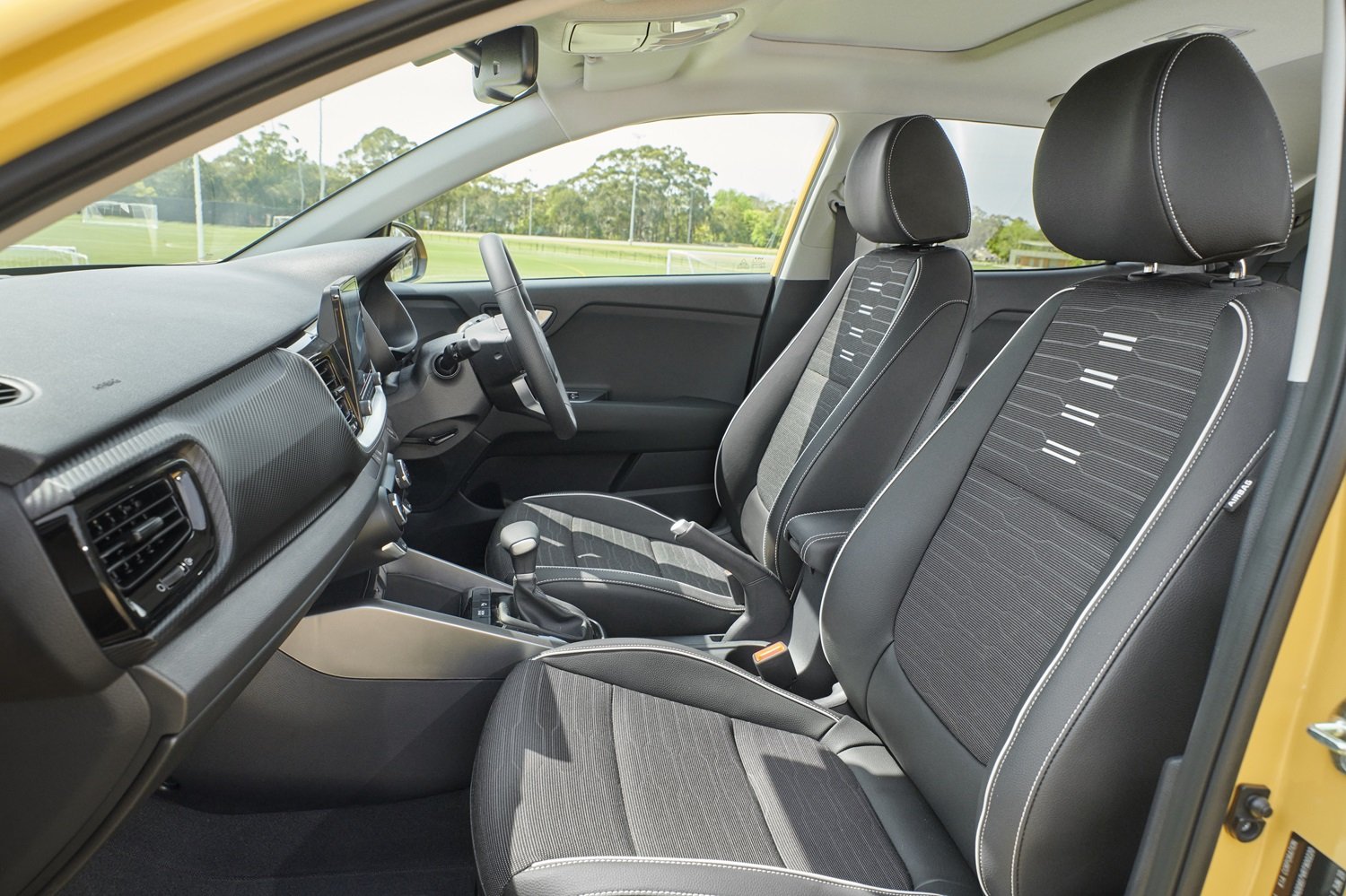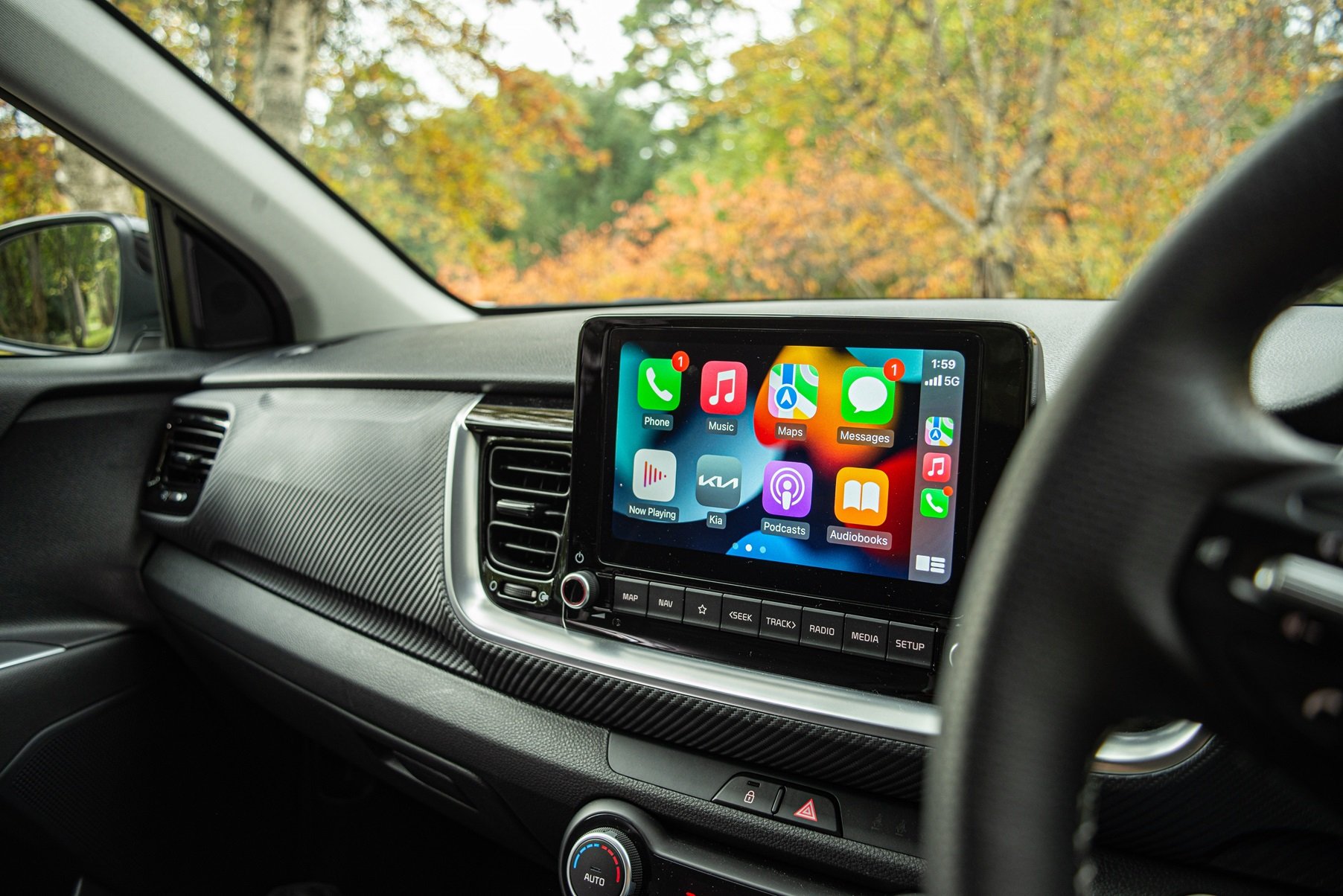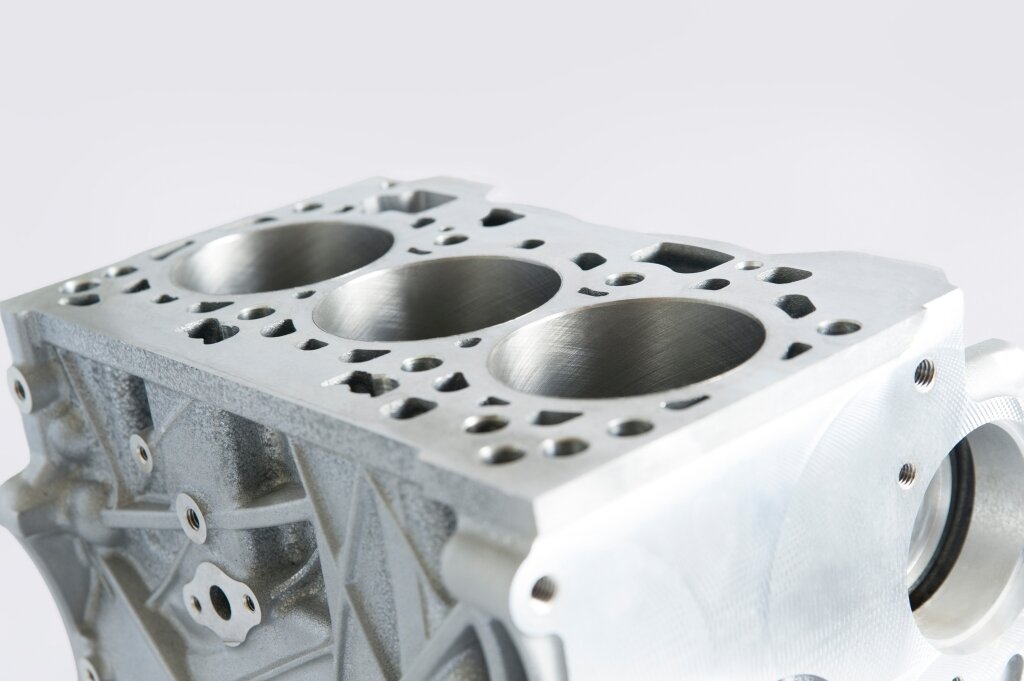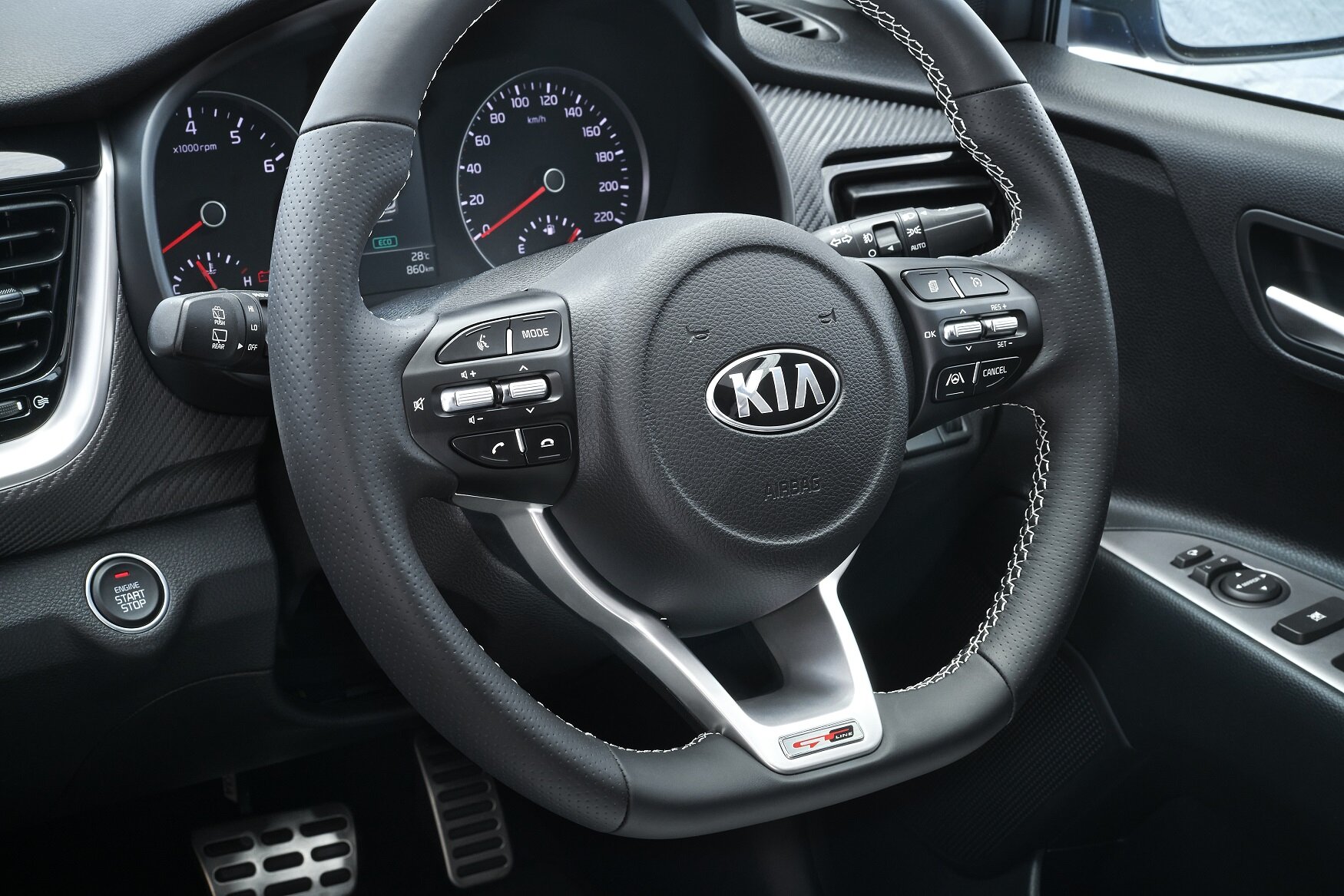Kia Stonic review and buyer's guide
A Kia Stonic is the next big thing in SUVs if you’re looking for modest size but with all the benefits of a normal hatchback. It’s safe, economical and affordable, making it an ideal first car.
The Kia Stonic is a great option for a small city runabout SUV that offers plenty of equipment at an affordable price.
Stonic is a raised and modernised version of the Rio hatchback, making it capable enough to be useful to young drivers, the elderly or anybody with modest means - without breaking the Bank of Mum & Dad.
While this is a trumped up Kia Rio trying very convincingly to be an SUV, that doesn’t necessarily make it a bad thing if you need mobility-related access to a small vehicle but vertical clambering is sub-optimal.
Alternatively, Stonic is a smart choice for a first car for young drivers who are often given the family’s delipidated old shitbox as their first car while the more experienced drivers like mum and dad get the new car with all the superior safety improvements.
Protecting your kids out on the roads shouldn’t work that way, which is why appealing small SUVs like the Stonic, Hyundai Kona, Kia Seltos, Mazda CX-3, Subaru Crosstrek and Mitsubishi Eclipse Cross or ASX make perfect sense.
It costs $32,500 driveaway for the only model grade available, the ‘GT-Line’. There was a three-tier model line-up but in 2024 onwards, the ‘S’ and ‘Sport’ variants (of which there was even a manual available) are now defunct. Is this a bad thing? Absolutely not. It just made your life considerably easier.
Let’s get a few things straight, OK? A Kia Stonic is a Kia Rio - only with added roof rails, infinitesimally more luggage space, and 43 millimetres of additional ground clearance. And different hair and makeup. This will cost you $5500 extra, roughly.
As far as the safety dudes at ANCAP were concerned, after an engineering analysis that took probably 30 seconds including a coffee break, they decided Stonic was actually a variant of Rio - so the Stonic gets the Rio’s 2017 five-star safety rating. No crash testing was required. They’re the same vehicle.
We’ve seen this kind of cloning before, with crossovers and cars: Stonic is Rio just like Subaru Crosstrek is Impreza hatch. Of course, some manufacturers do this without changing the name - like Toyota with Yaris and Yaris Cross.
Either way, accountants inside carmakers jump at this kind of thing, because the fundamental R&D is already done - amortised and paid for - you just jack the car up a bit, you give it marginally different styling (it’s like botox for the car industry), slap on a new badge - and there’s a brand new SUV, at a fraction of the cost of developing a bespoke one.
The difference here is that the Rio is now dead in Australia, whereas the Stonic retains its baby-SUV appeal in the same way the Hyundai Venue has that same market draw while the i20 is no longer available as anything other than a pocket rocket performance hatch called the i20 N. There’s also the i30 to consider.
Mazda 2 is still popular and is the base vehicle to make up the CX-3, and you can still have a Subaru Impreza or the jacked-up Crosstrek, but that’s as small as the Subaru range goes. Just to risk overloading you with yet another option, there’s also the Mazda 3, another very good small car. This ties neatly into the next segment.
MAIN COMPETITORS
We’ll get to the on-road Stonic stuff in just a sec, but first, some important context.
Don’t misunderstand here: Stonic is an awesome styling exercise. It looks great, the proportions are spot on, and the front end in particular came together really well, in my epistemically subjective opinion. Especially on GT-Line, which you’re specifically looking at in this review.
With cars being the fashion statement they often are in the minds of many - especially young drivers who would likely be shopping in this category, there’s all too frequently a line in the sand with the letters ‘SUV’ on one side. The ‘must have’ side. It’s non-negotiable in many instances.
So there’s going to be people out there - and you might be familiar with one, occasionally - for whom only an SUV will do. This ultimatum will be delivered most probably with the best of intentions and a perceived logic. For these people Stonic will be a worthy contender in the way Rio never was because it was a car. Mazda CX-3 and Venue have the X-factor, you can see it:
Stonic is priced and equipped very competitively against its peers, such as Mazda’s CX-3 and Kia’s big-sister Hyundai’s Venue.
So, you’ll pay roughly $10,000 more for a fully-loaded CX-3. However, the Mazda’s not a rip-off. CX-3 delivers roughly 50 per cent more power from its 2.0-litre four, and it has AWD and adaptive cruise, for example - both of which the Stonic lacks. So you are actually getting something more for your cash - but it is a $43,000 vehicle by the time you pay on-road costs.
If you compare Stonic dollar-for-dollar with CX-3, you’re looking at a front-drive CX-3 ‘Pure’ which gets:
manual seats (cloth trim)
standard (non-adaptive) cruise control; rear parking sensors; reverse camera
smaller 16-inch alloys
flip-up head-up display (cool, sure, But necessary?)
LED headlights (automatic), taillights and daytime running lights
satnav; auto wipers; leather steering wheel & transmission shifter
lane-departure and driver distraction warnings; blindspot monitoring, rear cross traffic alert, auto emergency braking
Stonic GT-Line starts looking pretty sharp against a CX-3 ‘Pure’ because it has LED foglights the CX-3 doesn’t get until the ‘Touring’ spec at over $35,500 driveaway. Stonic is still about $2500 in the green.
Hyundai Venue is another close direct Stonic competitor on price and spec. Like Stonic, Venue is front-drive only, but even here, Venue will give you about 25 per cent better power to weight. Meaning: it weighs less and offers 21 per cent more power. But Stonic has a dual-clutch transmission which is going to work very nicely as a sporty-driving choice in conjunction with the 1-litre turbocharge petrol 3-cylinder in the Stonic.
It’s going to depend on which one you prefer to drive, because these three are pretty evenly matched.
So, there’s your boxed set of three diminutive SUVs, if you want to duck out and test drive today, comparatively. CX-3 for polish and performance; Stonic as the price-leader; Venue in the middle. Just make sure you drive variants at the same price-point, otherwise this will skew your perception.
And if you simply find Stonic still isn’t big enough, but you don’t want to go too much bigger, you could also look at the Kia Seltos or the Mitsubishi ASX is you need a very similar price to Stonic, but about 18 per cent more luggage space in the boot.
Or if you need some all-wheel drive capability because maybe you have a steep slippery driveway, or perhaps you have family in rural or regional areas, maybe you visit a lot of beach carparks or own a properly with gravel backroads. All great situations for something like a Subaru Crosstrek or even just an regular Impreza - both however are a bit on the dear side of $35K, but that’s what you pay for the superior driveline.
Seltos murders a Crosstrek in a straight line, but in this kind of vehicle you may not be overly concerned with that as much as on-road driving stability and traction, in which case Seltos is still a dead heat with a Crosstrek on sealed roads. But the Subaru is more responsive to dodgy terrain because it never has to respond, because it’s constantly delivering the same drive front to rear.
But if you do want an SUV between Seltos and Stonic with some grunt, try the Kona with 1.6 turbo powertrain. It’s pretty handy with all-wheel drive as well, but then you start getting much higher up in the pricing at which point you’re no longer comparing the Stonic with comparatively fair rivals. An Impreza offers AWD and a bigger boot than Stonic at $35,400 (only $2K more), and it’s not like you’d be missing out on leather seats either way because Stonic doesn’t get them anyway.
That segues nicely into Stonic’s interior features.
INTERIOR
There is of course a class of buyer who could not give a dead dingo’s donger about things like powertrains. As long as the car starts and gets you from here to there, and keeps up with the traffic, right. I’m obviously not talking to you about the powertrain - if that’s the benchmark, it’s fine.
My strong advice would be, however: Test drive the GT-Line, back to back, in the kinds of conditions in which you will mainly drive, and see which of the pair ticks the most boxes for you. You might like the raucous 1.0-litre turbo three-cylinder in the GT-Line. That’s allowed. You might just find the CX-3 more refined and smoother to drive around town.
Anyway, it’s also easy to come away loving the spec and the styling in the GT-Line. Who cares if there’s no driver’s electric seat adjustment, and no head-up display, no adaptive cruise - but you do get heaps of safety kit, and you do have to factor in the price, which is bloody sharp. It might also be a chance for your kids to appreciate having a little bit less of everything when it comes to learning how to drive.
As hardships go, sitting in a Stonic GT-Line is not torurous.
You get wireless Car Play and wireless Android Auto (but it’s only wireless on the Sport) . With voice commands, using OK Google and Hey Siri. But you still have to plug in a cable for those phone integrations on the GT-Line, mainly because one of those two tech giants is having a tantrum over whose nav gets to be the default display. I think it’s probably Apple.
Anyway, across the range you can connect two smart phones - allowing you to argue endlessly about whose music plays.
The driver’s phone can be configured for hands-free calls, while the passenger’s can inflict notionally ‘her’ music on (notionally) him. For what I’m sure will feel like eternity - even if you’re just driving up to the local shops. I’m not sure that’s a net step forward for mobility, frankly.
Basic air conditioning works just as well as dual-zone climate control, you just have to turn the fan speed up a bit. You’ve got wired connectivity to smartphone mirroring, so on that front, Stonic is absolutely up there with medium or large SUVs that cost $40,000 more.
You even get two pairs of outboard ISOFix and top-tether anchor points for child restraints if that’s what you need from any other five-seat medium SUV costing damn-near $60,000 these days.
Mums and dads like you might appreciate the simplicity of the driver’s display which has only the more pertinent information to scroll through like fuel economy and trip computer, speed and what ‘driver assist’ features are currently disabled for the benefit of the driver to actually concentrate.
Simple buttons and dials operate the heater/AC and fan speed, a simple button turns on or off the demisters and air recirculation, and same goes for the 8-inch infotainment screen which has a nice row of buttons below.
DRIVING
Kia Australia has actually referred to the Stonic as a “pocket rocket” and that’s not entiarely inaccurate in the modern context of new cars getting heavier and heavier and therefore lazier and more cumbersome to drive on a nice road.
In fairness, you can probably see the truth in this, but admittedly a pocket rocket could still afford to be a bit bigger and offer closer to 90-100 watts per kilo. Stonic GT-line gives you about 60. So, it’s not exactly punchy, but more like spritely. In that sense it has a sporty character to it, and it’s the lightness of a sub-1300kg vehicle that makes it very fun to drive. You could call it moderately sporty.
To be fair, the mid-rev performance is actually pretty good, thanks to the turbo. The three-cylinder is typically raucous too, it’s got that “Shakin’ all over” thing happening, which is rather nice if you’re sufficiently motivated to get your snout out of your phone and have a crack behind the wheel from time to time.
GT-Line gets a nice, taut suspension tune in line with its spritely aspirations, which is about 20 per cent stiffer and sportier than the now defunct Stonic Sport. So you get the good handling package regardless, and that makes driving fun again without being burdened by excessive weight.
It might seem counter-intuitive if you’re considering a Stonic for, perhaps, your younger drivers, but this is actually a good thing. It’s less likely to encourage silly driving behaviour because Stonic does not need to be going fast to feel fun. You don’t have to push this little vehicle anywhere near its limits to enjoy it - the safety net is a very long way from the kind of driving your learner or probationary drivers are ever going to know.
Stonic feels fun and makes its modest 3-cylinder engine noise at about 3000 RPM and because it’s a fairly light car, it slows down very quickly because less mass carried less kinetic energy. Therefore, it also stops very quickly and the brakes are very good at doing what they set out to do.
The fact Stonic has less pwoer than its rivals also means it’s just not going to be capable of doing stupidly fast overtaking manoeuvres, and it takes (what feels like) half an hour to get up to 110km/h anyway, even though it is direct injection and therefore tuned for performance, but then it has to be otherwise it would be even slower - prohibitively so.
Fortunately, one of the things that has worked out nicely for Kia, is the local bespoke Australian suspension tune for our crap roads. It’s made Stonic very delightful to throw around on a piece of twisty road.
The chassis is just stiff enough to be responsive without being too harsh in the bump-absorption domain. Kia Australia gets 13 out of 10 points for making Stonic not about power, but about handling, which it does exceptionally well.
I'll help you save thousands on a Mazda CX-5
Just fill in this form.
No more car dealership rip-offs
Greater transparency
Less stress
ENGINE
This particular Stonic is the GT-Line, which comes with the 1.0-litre three-cylinder turbo engine - same peak power output as the 1.4-litre atmo four in Stonic Sport.
But let me assure you: less is more - at least in this case. Even though peak power is the same.
If you’re wondering why, here’s the beer-garden physics backyard briefing on that:
3 cylinders vs 4 cylinders
Many people might look briefly at these specs, see they’re the same and just go for the cheaper Stonic Sport. But there’s more to it than the face-value figures.
Peak power is the same (74kW), but what matters is how the engine performs across all revs because we don’t all drive at 4500 or 6000 RPM.
Power, which makes Stonic accelerate, is a product of torque and revs. So when we convert the power in kW to its bare bones configuration, it reveals the true potential of each of Stonic’s engines.
So, in trying to compare the 3-cylinder’s power output compared to the 4-cylinder, when we do the maths on the 1.4 4-cylinder engine, we find that from the 133Nm @ 4000 revs it offers 55kW @ 4000 RPM.
Applying the same formula to the 3-cylinder’s 172Nm @ 1500-4000 RPM, we get 42kW at 4000 RPM - which is better.
When you pull out to overtake, you’re not going to be at 6000RPM. You’re going to be at lower revs and build up to 6000RPM, and in that time, you’re going to accelerate faster in the 3-cylinder.
A 3-cylinder is essentially a 6-cylinder cut in half. 3-cylinders rock on the crankshaft, inherently. And because you have fewer firing pulses, it’s going to be rougher delivery of power. The more cylinders, the smoother the engine’s operation because they’re better balanced by firing pulses per cylinder.
Stonic runs on 91 RON fuel, as does the Ford Fiesta 1.5 with 98 kW/L which is huge, and makes me wonder therefore about the durability of that engine - with a third more specific power output (and Ford has a reputation for failing high performance engines, like the Focus RS).
All the other 3-cylinder engine outclass the Stonic initially, but they all run 95, which seems counterintuitive for the budget SUV segment. Stonic is in many ways the superior 3-cylinder here because it still delivers decent specific power (kW per litre) while running on lower octane fuel.
Transmission
The 7-speed DCT on the GT-Line is quite engaging, especially if you go looking for that pocket rocket potential. And it’s quite adaptive, so if you lend the car to your adult son you’ll know if he’s been thrashing it, you’ll know because it’ll drive differently the following morning when you get in.
You’ve gotta remember that DCTs are typically not that refined at low-speed maneuvering. It’s about accepting the strengths and learning to live with the weaknesses.
But before you jump to the hasty conclusion that DCTs are crap, they’re just not. They’re good at sporty driving, mediocre at maneuvering at low speeds, and they save you 6-10 per cent on fuel, whenever the car is turning and burning. A conventional auto is the polar opposite of that. So it kinda depends on your priorities - such as: how much you enjoy paying for fuel.
DRAWBACKS
The flat-bottom steering wheel have their place in race cars where drivers cannot get in, but on normal cars they are an ergonomic step backwards because making full-rotation low-speed manoeuvres they can sometimes leave you wondering where the steering wheel has gone. Some people don’t have this problem, but some might.
The infotainment system, which generally is pretty nice, is not tailored to our right-hand drive market because it has a left-hand drive optimised screen. This means when you’re sitting there on the right-hand side, driving the car, the buttons for the ‘home’ screen or whatever, are in the far top left-hand corner. This is the optimal position for the left-hand drive version.
How hard would it be to write a few lines of code which change these 'screen ‘buttons’ for our RHD market? Again, this might bother you, or it might not.
The beeping, squawking, lane-keeping safety stuff is a complete pain in the arse on all modern cars, not just Stonic. So fortunately you can turn it off by holding down the button on the steering wheel… Every time you restart the car.
After a week driving the Stonic GT-Line the suspension tune on Stonic GT-line is ‘Goldilocks’ the powertrain is just not refined enough because it surges all over the place. The main benefits of the DCT seem to feed back into the three-cylinder, and vice-versa, in an unideal way. You want smooth, gradual acceleration on the open road with long corners and moderate changes in traffic conditions.
But this is a vehicle aimed squarely as metro-based drivers, so it needs to be able to slip back into stop-go traffic. Stonic tries to do that, but it can sometimes be a bit too aggressive, staying high up in the revs after you pull out of a turn, and then you want it to settled down (because the hard work is done). Except the DCT is trying to predict what comes next (because that’s the clever nature of their design), but in doing so the 3-cylinders are singing away a few too many seconds after the show is over.
The engine over-emphasises the drawback aspect of the transmission, and the transmission returns the favour, sadly.
Like, DCTs are great when they can predict the future with some certainty. Like, on the open road, or just gunning it off the mark. They select the right next gear and then they shift brilliantly, at exactly the right time. But in traffic, the future’s not so clear cut, and they get wrong-footed quite easily, and this engine, which is hardly a torque monster, has quite the hard time making up the difference in a refined way, frankly.
It seems somewhat better in Sport mode. But then when you restart the engine after having coffee with the girls from uni, it defaults back to Eco mode, which is annoying considering that’s the configuration you might have wanted.
Urban running around, in traffic is where Stonic needs to shine, but it has a patina that may irritate you. Or it may not - that’s also possible.
CONCLUSION
If you really do want to teach your kids how to drive in a safe, undistracting but safe (by modern standards) Stonic is a vehicle that absolutely is not a shitbox. It just doesn’t go to the same level of aspirational luxury that young drivers (or elderly drivers) simply do not need in their lives.
Obviously this is not some attempt to tell you how to parent, but it is an advocacy for carmakers to offer new cars that are comparatively less demanding on the attention-span of drivers who already have enough trouble in the distraction economy.
Stonic has everything you could need in a basic, functional, frugal and affordable modern car, both inside and out.
Tonic Films shot the epic B-roll in this review. If you need a pro videographer, visit Tonicfilms.tv. They worked on Star Wars!







































The CX-60 combines performance, batteries and SUV-luxury to beat Lexus, Mercedes and BMW while Mazda refuses to go fully electric in favour of big inline six-cylinder engines. If your family needs lots of legroom, a big boot, and grunt, the CX-60 needs to go on your shortlist.